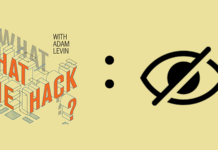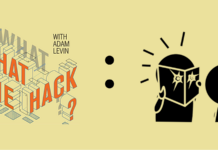You’d be hard-pressed to find someone who disagrees that America’s schools are in need of serious reform. And it’s an obvious leap to think technology is the fast lane to improvement.
“Ed-tech” is where some of America’s thorniest issues collide, however. Big Brother. Marketing to kids. Privacy. Boondoggles. Attention deficit disorder. Teacher accountability.
As a result, ed-tech is where a lot of early tech ideas go to die. The Los Angeles Unified School District has suspended its $1 billion plan to get iPads to every child, and now the FBI is investigating. Bill Gates’ $100-million idea to encourage more data sharing, which led to the company InBloom, was shuttered earlier this year after parent uprisings around the country. There have been plenty of little failures, too, like when Hoboken, New Jersey, threw away all the laptop computers it had purchased for kids. Stories suggesting tech luminaries like Steve Jobs didn’t let their kids near gadgets don’t help.
Still, ed-tech is an enormous industry on a massive growth curve. In 2014, the Center for Digital Education says schools are expected to spend almost $10 billion on it, a $240 million increase from last year.
And its benefits are impossible to ignore. Software like ClassDoJo, recently the subject of a negative New York Times story, hold out the promise of automating tasks like attendance so teachers can spend more time teaching. Better yet, they promise to keep track of subtleties teachers might miss, such as sudden declines in classroom participation, which could provide early warnings to larger issues with kids. “Teachers use ClassDojo to communicate success with parents, and to give students a chance to excel outside an increasingly narrow framework of academic assessment,” DoJo wrote in a rebuttal.
Our Kids’ Big Data
As a society that has barely scratched the surface of a complex privacy rights debate in the lives of adults, it’s hard to imagine we are close to reaching consensus with kids and young adults. For now, that means we are stuck with a lot of familiar-sounding debates.
When the New York Times recently ran an opinion piece extolling the virtues of software that tracks college students, it argued that big data could help colleges spot students who were at risk of dropping out and wasting their investment in hefty student loans. It also described a product called “major matcher,” that would help kids pick studies that match their aptitude, based on the success of other similar students from the past.
It did not address a more obvious question: Why aren’t students getting better one-on-one advising, which could also spot problems and offer direction? And it offered only a token acknowledgment of the alarming possibilities raised by colleges that head far down the data mining trail.
“An ed-tech investor I know argues that colleges should be collecting even more data by mining Facebook (FB),” writer Goldie Blumenstyk said. “For reasons of privacy, practicality and data-reliability, that vision may be a longer way off.”
Got a Problem? Technology Is Touted as the Answer
Technology is often held up as a silver bullet to solve big social problems. It’s not just education. Remember all the money spent (and wasted) on facial recognition software for airports in the wake of 9/11? Tech is often set up to fail by expectations that are too high and an underlying agenda that has more to do with cost savings than investment. Last month, CNN aired a documentary named “Ivory Tower” that explored the issue of rising college costs and reduced government aid. It devoted an segment to an experiment at San Jose State University, which had contracted with a private firm to replace in-class courses with online offerings to save money. The school quickly suspended the experiment after dismal pass rates.
And a Clemson University study found, not surprisingly, that students learn more in person than they learn online. That certainly doesn’t mean tech can’t help, however.
Andre-Tascha Lamme is director of Digital Engagement at an educational reform nonprofit called StudentsFirst, started by former Washington, D.C., superintendent Michelle Rhee. He’s concerned that every tech rollout failure is a step backward for reform. “[The] best of intentions ended up causing a situation with horrible optics and easy fodder for those who want to keep things status quo ante,” he said.
“On one hand, the tools … whether hardware like smartboards or infrastructure such as broadband connections … can provide tremendous vehicles for improving and augmenting instruction, especially in Title I schools or rural schools or other such with heavy challenges. The caveat is that [tech solutions] should be approached with a mind towards best practices and proper return on investment. Simply increasing budgetary spends do not improve education.”
Beware the Free Offering
And more technology really can do more harm than good. Parents, rightly, are often angered to find their kids end up in databases they don’t even know exist. There’s a saying that’s trite in Silicon Valley but might be new to parents — if you aren’t paying for the product, you are the product. When software firms come around offering inexpensive or free products to school districts, they always come with a catch. They have to. That catch is usually some kind of data collection, which will be used for marketing.
For its part, ClassDoJo has a clear privacy policy and promises it will delete data about students after one year. Other firms make no such promises. And as we’ve seen countless times, privacy policies can change.
“The overuse of tracking technologies in schools may have widespread consequences that we can’t fathom,” warned Washington attorney and school privacy expert Brad Shear. “For example, the last three presidents have made some drug/alcohol usage admissions that if the entirety of their actions were publicly known before their presidential elections, it may have denied them the presidency. What if one of these presidents regularly got drunk or smoked pot while writing papers on a computer and then looked at porn on Youtube oremailed a naked selfie to a fellow student and all of this data was data-mined and became part of a student’s digital profile?”
Lamme understands why tech firms as tech advocates have a long way to go to build the trust needed to make gadgets and networks welcome additions in classrooms.
“As a member of the education reform community, I heartily endorse the increase in technology utilization, he said. “If protections are put in place as to access and use of the data, I am good with this — enthusiastically so. But .. we rarely do a good job at restricting data usage.”
This post was written by Bob Sullivan and originally appeared on Credit.com.











